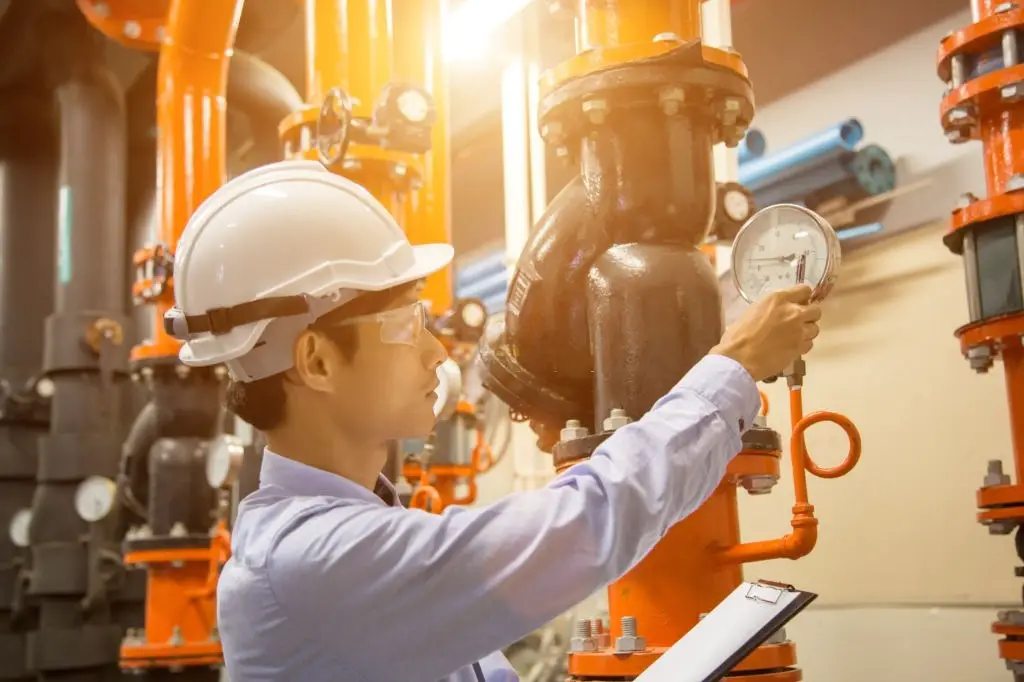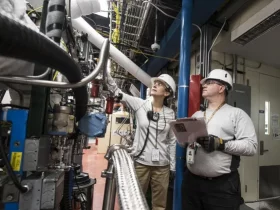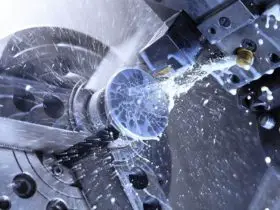Pumps transfer liquids from one point to another by converting mechanical energy from rotation into pressure energy (head). The pressure applied to the liquid forces the fluid to flow at the required rate and to overcome friction (or head) losses in piping, valves, fittings, and process equipment.
When designing a pump system, engineers determine the fluid properties, end-user requirements, and understand the environmental conditions of the pump system under consideration. Pumping applications include constant or variable flow rate requirements, serving single or networked loads, and consisting of open loops (nonreturn or liquid delivery) or closed loops (return systems).
Design Considerations for Pump Systems

The following important points should be considered in the design phase of pumping systems:
- Acidity/alkalinity (pH) and chemical composition: Corrosive and acidic fluids can degrade pumps and should be considered when selecting pump materials.
- Operating temperature: Pump materials and expansion, mechanical seal components, and packing materials need to be considered with pumped fluids that are hotter than 200°F.
- Solids concentrations/particle sizes: When pumping abrasive liquids such as industrial slurries, selecting a pump that will not clog or fail prematurely depends on particle size, hardness, and the volumetric percentage of solids.
- Specific gravity: The fluid specific gravity is the ratio of the fluid density to that of water under specified conditions. Specific gravity affects the energy required to lift and move the fluid and must be considered when determining pump power requirements
- Vapor pressure: A fluid’s vapor pressure is the force per unit area (F/A) that a fluid exerts in an effort to change phase from a liquid to a vapor, and depends on the fluid’s chemical and physical properties. Proper consideration of the fluid’s vapor pressure will help to minimize the risk of cavitation.
- Viscosity: The viscosity of a fluid is a measure of its resistance to motion. Since kinematic viscosity normally varies directly with temperature, the pumping system designer must know the viscosity of the fluid at the lowest anticipated pumping temperature. High viscosity fluids result in reduced centrifugal pump performance and increased power requirements. It is particularly important to consider pump suction-side line losses when pumping viscous fluids.
The design pump capacity or desired pump discharge in gallons per minute (GPM) is needed to accurately size the piping system, determine friction head losses, construct a system curve, and select a pump and drive motor. Process requirements may be met by providing a constant flow rate (with on/off control and storage used to satisfy variable flow rate requirements), or by using a throttling valve or variable speed drive to supply continuously variable flow rates.
The total system head has three components:
- Static Head
- Elevation (potential energy)
- Velocity (or dynamic) Head
Static head is the pressure of the fluid in the system and is the quantity measured by conventional pressure gauges. The height of the fluid level can have a large impact on the system head. The dynamic head is the pressure required by the system to overcome head losses caused by flow rate resistance in pipes, valves, fittings, and mechanical equipment. Dynamic head losses are approximately proportional to the square of the fluid flow velocity, or flow rate. If the flow rate doubles, dynamic losses increase fourfold.
For many pumping systems, total system head requirements vary. For example, in wet well or reservoir applications, suction and static lift requirements may vary as the water surface elevations fluctuate.
You also need to be aware of a pump’s net positive suction head requirements. Pumps need a certain amount of fluid pressure at the inlet to avoid cavitation. A rule of thumb is to ensure that the suction head available exceeds that required by the pump by at least 25% over the range of expected flow rates.




![Types of Engineers and What they Do [Explained]](https://www.engineeringpassion.com/wp-content/uploads/2022/04/types-of-engineers-and-what-they-do-280x210.jpg)







Leave a Reply